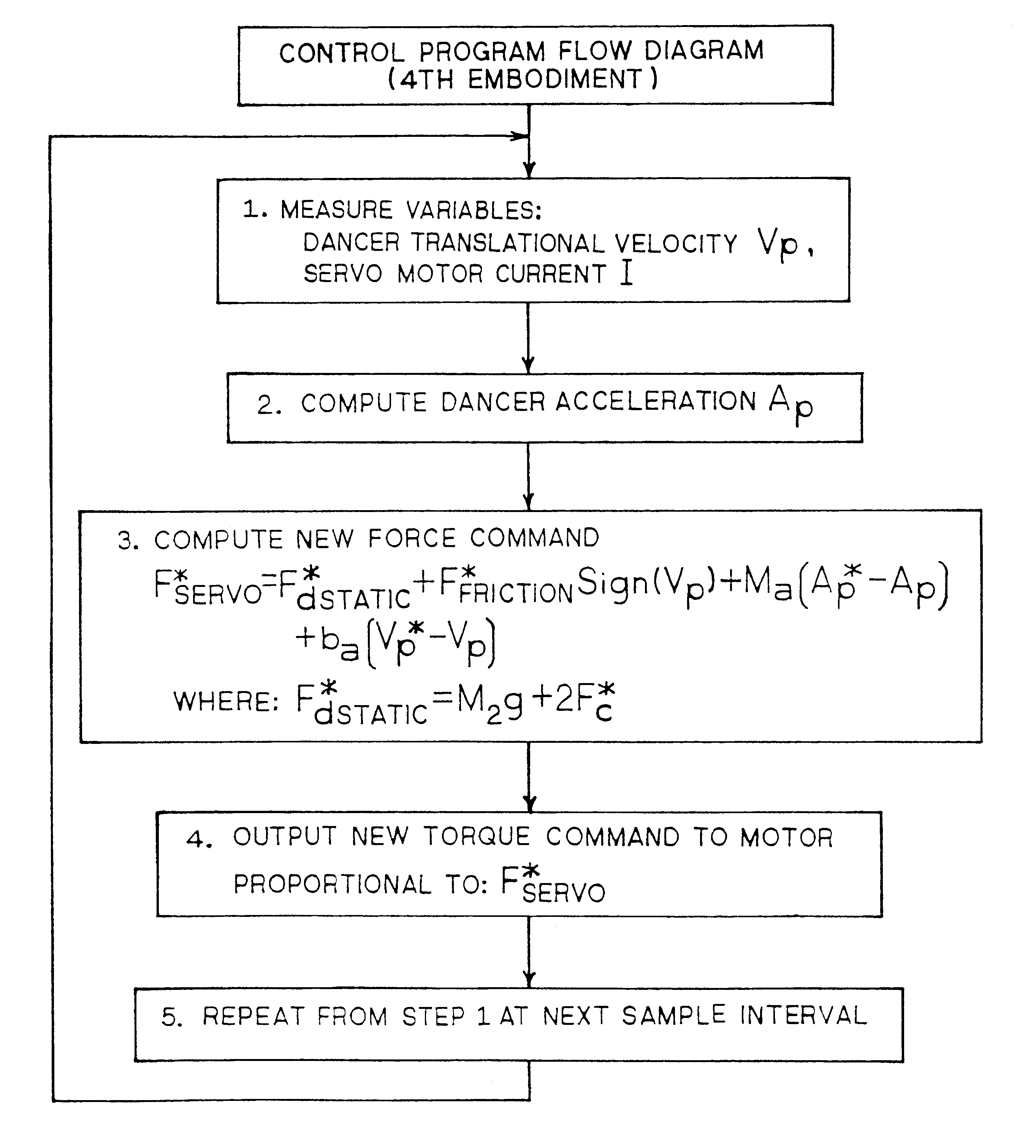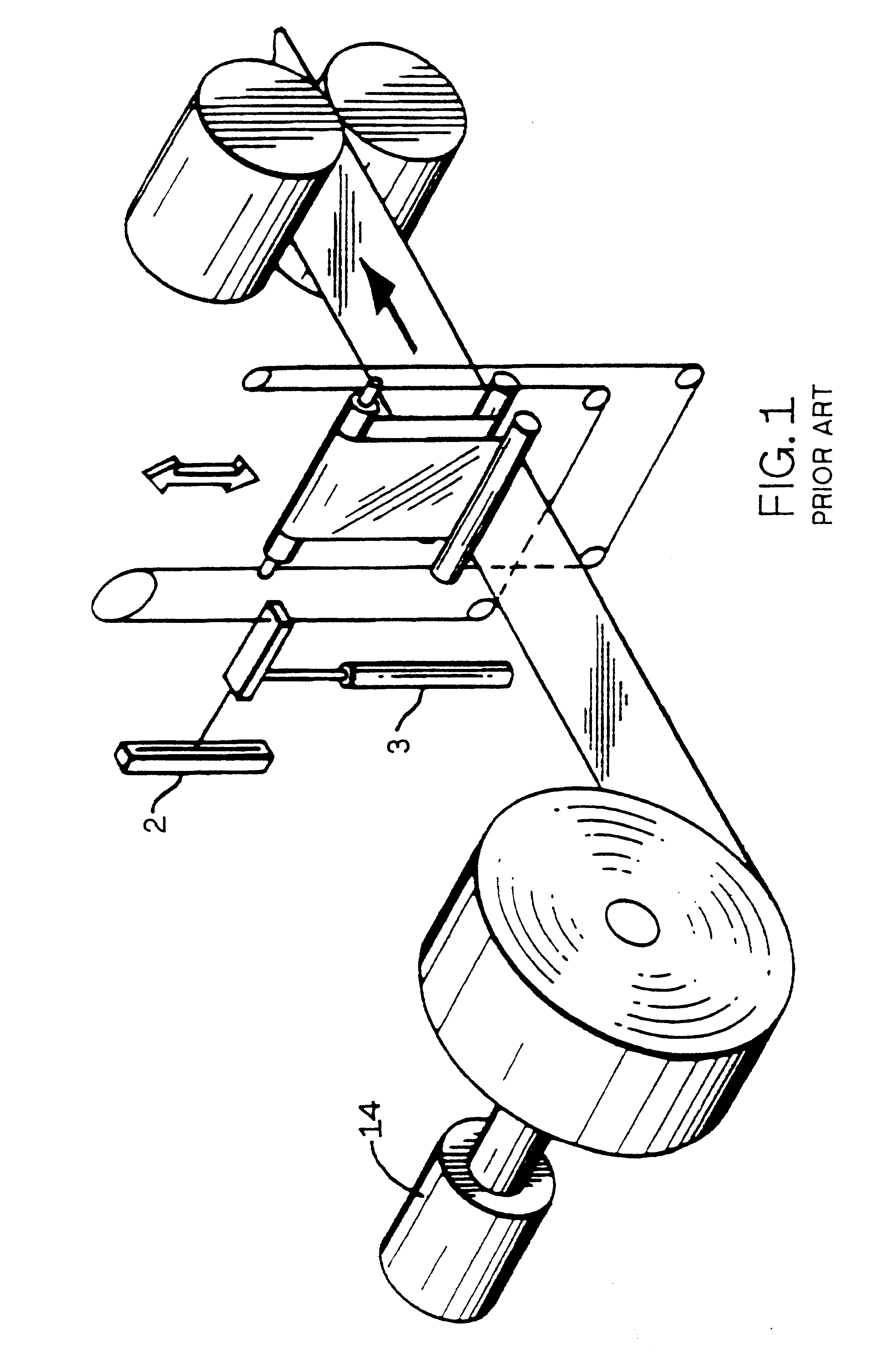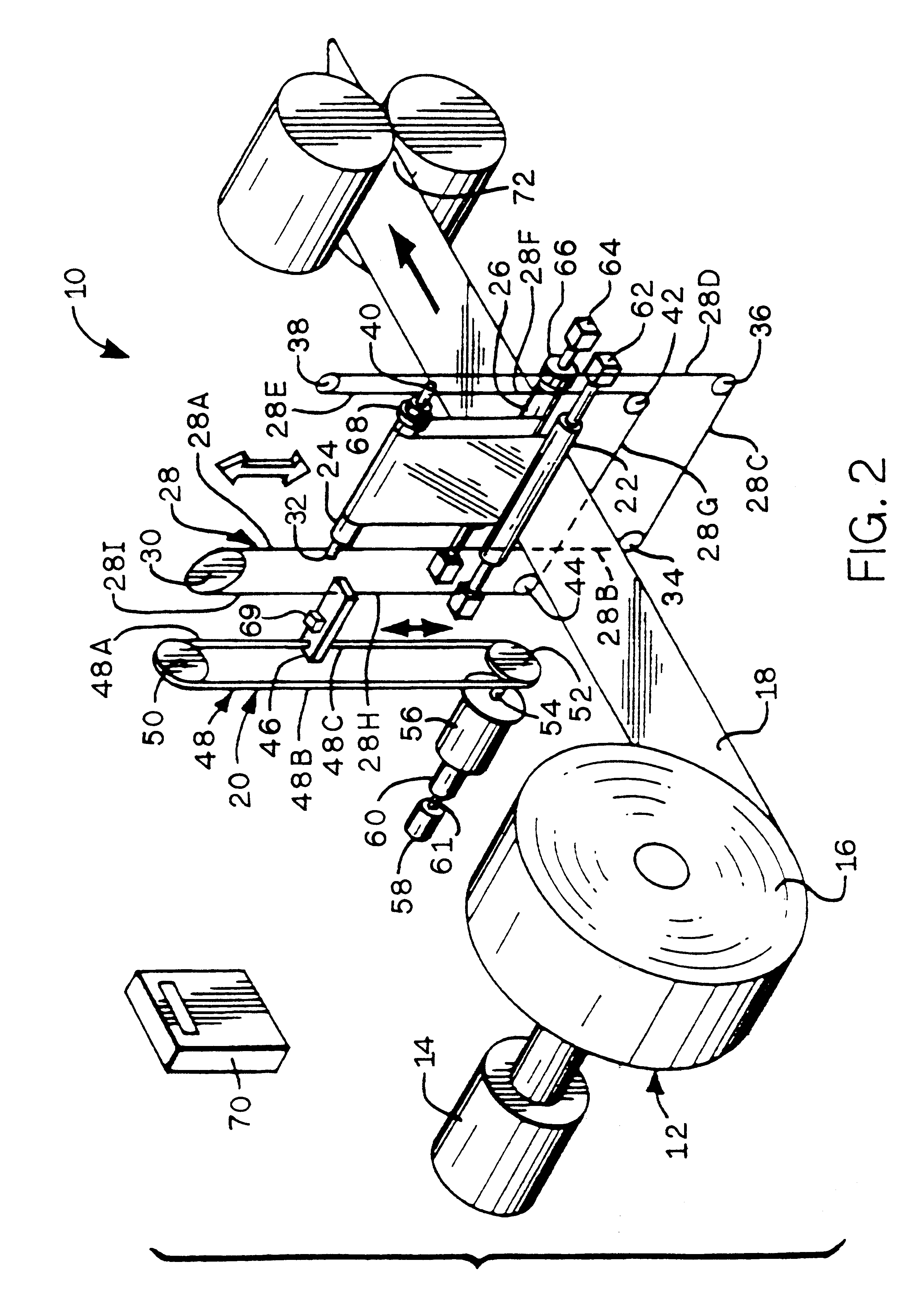Method and apparatus for controlling web tension by actively controlling velocity and acceleration of a dancer roll
a technology of active control and web tension, applied in the direction of dynamo-electric converter control, multiple dynamo-motor starters, instruments, etc., can solve the problem of direct control of the acceleration of the dancer roll, and provide an active
- Summary
- Abstract
- Description
- Claims
- Application Information
AI Technical Summary
Benefits of technology
Problems solved by technology
Method used
Image
Examples
second embodiment
FIG. 8 shows control program flow diagram for the invention. In this embodiment, in step 1, the sensed variables are dancer translational velocity V.sub.p, web tension F.sub.c after dancer roll 24, and actuator apparatus or servo motor current I are measured.
In step 2, the web tension derivative dF.sub.ce / dt is computed. In one method the average force derivative is estimated using the equation:
dF.sub.ce / dt=[F.sub.c (present)-F.sub.c (previous)] / .DELTA.T
where
F.sub.c =measured web tensions (most resent and previous scans), and
dF.sub.ce / dt=derivative of web tension.
Thus, the derivative of web tension is simply calculated from changes in web tension over the time interval or scan time of the system.
In step 3, estimated dancer acceleration A.sub.pe can be computed using translational velocity as described earlier. Likewise, motor current I can be utilized, in combination with the other sensed values of step 1, to compute dancer acceleration A.sub.pe.
In step 4, a ne...
third embodiment
FIG. 11 shows a control program flow diagram for a third embodiment of the invention. In this embodiment, in step 1, the variables of dancer translational velocity V.sub.p, web tension F.sub.c after dancer roll 24, and actuator apparatus or servo motor current I are measured.
In step 2, the web tension derivative dF.sub.ce / dt is computed. In one method the average force derivative is estimated using the equation set forth earlier in the second embodiment. Of course, the derivative of web tension can also be estimated using the observer set forth earlier in FIG. 10 of the second embodiment.
In step 3, estimated dancer acceleration A.sub.pe can be computed using translational velocity, as described earlier. In another method for step 3, actuator apparatus current I can be utilized, in combination with the other sensed values of step 1, to compute dancer translational acceleration A.sub.pe. Of course, in some embodiments, accelerometer 69 can be utilized to measure translational acceler...
fourth embodiment
FIG. 14 shows a control flow program for a fourth embodiment of the invention. In this embodiment, in step 1, the only variables measured or sensed are dancer translational velocity V.sub.p and actuator apparatus or servo motor current I.
In step 2, dancer acceleration A.sub.pe can be computed or estimated by an observer using the equation described earlier:
A.sub.pe =[k.sub.1 (V.sub.p -V.sub.pe)+k.sub.te I-F*.sub.d static -F*.sub.friction Sign(V.sub.p)] / M.sub.2e
Thus estimated dancer acceleration is computed by an observer, as described earlier, using only dancer translational velocity V.sub.p and servo motor current I as measured inputs. All of the other elements are constants or values computed from translational velocity V.sub.p.
In step 3, a new force command F*.sub.servo is estimated using the equation shown therein. In step 4 a new output torque command proportional to F*.sub.servo is output to actuator apparatus 56 via zero order hold (ZOH). Actuator apparatus 56, in most embodi...
PUM
 Login to View More
Login to View More Abstract
Description
Claims
Application Information
 Login to View More
Login to View More - R&D
- Intellectual Property
- Life Sciences
- Materials
- Tech Scout
- Unparalleled Data Quality
- Higher Quality Content
- 60% Fewer Hallucinations
Browse by: Latest US Patents, China's latest patents, Technical Efficacy Thesaurus, Application Domain, Technology Topic, Popular Technical Reports.
© 2025 PatSnap. All rights reserved.Legal|Privacy policy|Modern Slavery Act Transparency Statement|Sitemap|About US| Contact US: help@patsnap.com



